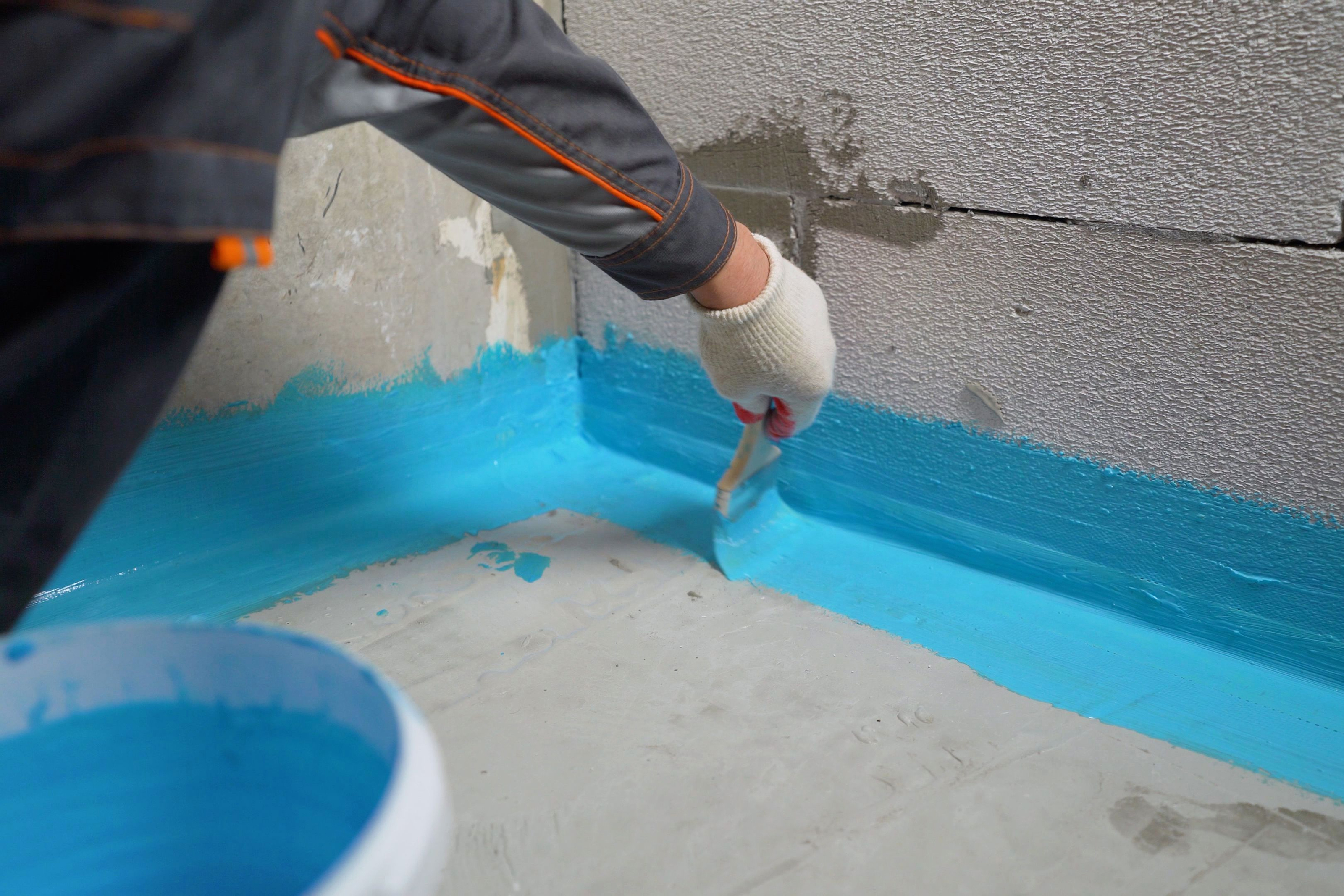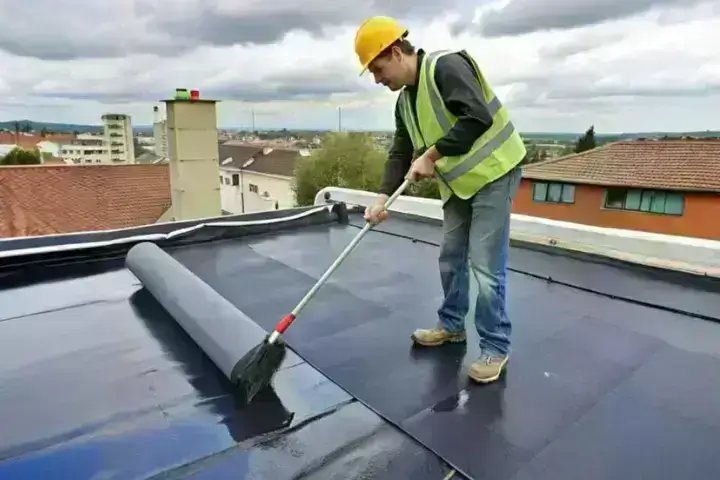The Do’s and Don’ts of Sump pump discharge drainage Omaha for Residential Properties

All Regarding Waterproofing: Comprehending Its Importance and Advantages for Your Home
Waterproofing is a crucial facet of home upkeep that many homeowners overlook. It serves to secure frameworks from the harmful results of water infiltration, which can result in considerable problems in time. Understanding the numerous methods and their importance can aid home owners make educated decisions. As the conversation unravels, the actual concern continues to be: just how can efficient waterproofing change a home's resilience versus moisture-related dangers?
What Is Waterproofing and Just How Does It Function?
Waterproofing is a necessary process designed to shield structures and frameworks from water seepage. It involves the application of numerous materials and techniques that create an obstacle, avoiding water from passing through surface areas. Typical waterproofing approaches consist of the use of membrane layers, coverings, and sealants, which can be put on roof coverings, structures, and walls. Each approach is picked based on the certain needs and problems of the structure.The performance of waterproofing relies upon correct setup, ensuring that all locations are sufficiently covered and secured. Products such as bituminous membranes, liquid waterproofing compounds, and cementitious layers are frequently utilized, each offering distinct benefits. In addition, water drainage systems might be incorporated to reroute water far from susceptible areas, even more enhancing security. In general, waterproofing not only safeguards structural honesty but additionally boosts longevity, making it a crucial factor to consider in building and construction and renovation jobs.
The Significance of Waterproofing for Homeowners
Homeowners deal with various difficulties in preserving their properties, and one of the most substantial worries is water damage. This problem can occur from numerous resources, consisting of heavy rains, flooding, and pipes failures. When left unaddressed, water damage can bring about serious structural issues, mold and mildew growth, and costly fixings. Waterproofing stands as a crucial safety net that protects homes from these prospective dangers.
Usual Waterproofing Methods and Techniques
When thinking about waterproofing methods, house owners can select from a selection of effective options. Exterior waterproofing remedies focus on stopping water from passing through the framework, while indoor waterproofing techniques deal with wetness problems once they have taken place. Recognizing these choices is essential for preserving a dry and healthy and balanced home environment.
Outside Waterproofing Solutions
To protect a residential or commercial property from water breach, various exterior waterproofing remedies can be used, each tailored to the specific requirements of the structure. One common technique is the application of waterproof membranes, which develop an obstacle against wetness. These membrane layers can be either liquid-applied or sheet-based, depending upon the installation demands. Another efficient technique entails using drainage systems, such as French drains, that redirect water away from the structure. Additionally, using exterior sealants can help protect surfaces from water penetration and corrosion. Landscaping options, including grading and appropriate water drainage, can likewise contribute significantly to stop water accumulation around the structure. Each of these techniques plays a necessary function in boosting the longevity and durability of the residential property.
Inside Waterproofing Techniques
Interior waterproofing strategies are important for protecting a home against dampness and water damages. Common approaches include the application of sealants and membranes, which create a barrier on wall surfaces and floorings to stop water seepage. Interior drain systems, such as sump pumps and French drains, effectively reroute water away from susceptible areas. Additionally, vapor obstacles can be installed to block wetness from permeating via walls and floors, especially in basements and crawl spaces (Yard drainage Omaha). Regular maintenance and assessment of these systems are crucial to ensure their effectiveness. Additionally, attending to any plumbing leakages or condensation problems without delay can greatly improve the total waterproofing strategy. With each other, these techniques provide property owners with a detailed approach to lessening the risk of water-related issues

Indicators Your Home Demands Waterproofing
House owners should be mindful of crucial indications that their building may call for waterproofing. Visible water damages, mildewy odors, and frequent mold and mildew development are critical signs that wetness is endangering the integrity of the home. Attending to these concerns without delay can stop further damage and ensure a much healthier living setting.
Visible Water Damage
Noticeable water damage functions as a clear sign that a home may need waterproofing steps. House owners ought to be alert for indicators such as water spots on walls or ceilings, peeling off paint, and distorted flooring. These noticeable signs often indicate underlying moisture problems that, if left unaddressed, can bring about more comprehensive damage and pricey fixings. Mold and mildew growth can also happen, though it will certainly be discussed in the next area. Furthermore, home owners should check basements and crawl rooms for moisture or efflorescence on concrete surfaces, which shows wetness infiltration. Noticing these indications early can aid avoid better damage of the home's structural integrity. Prompt waterproofing measures can protect the investment and keep a healthy and balanced living atmosphere.
Musty Odors Present
Mildewy smells are commonly a dead giveaway that wetness is remaining in hidden areas of a home, suggesting the need for waterproofing solutions. These undesirable smells frequently develop Learn More Here from damp cellars, crawl spaces, or behind wall surfaces, where water infiltration may not be instantly noticeable - Sump pump discharge drainage Omaha. Homeowners ought to pay very close attention to these odors, as they recommend that excess moisture is caught, potentially leading to further damages. The presence of musty smells can endanger interior air top quality, affecting the health and wellness and comfort of homeowners. Ignoring this alerting indicator can cause more severe problems, making punctual assessment and action crucial. By attending to waterproofing demands, property owners can eliminate moldy odors and create a healthier living environment
Frequent Mold Development
Regular mold and mildew development is a clear sign that a home might be experiencing wetness issues, necessitating waterproofing procedures. Mold grows in moist settings, making it a significant problem for house owners. Indicators of mold can consist of dark spots on wall surfaces, ceilings, and around windows, along with a persistent moldy scent. If mold and mildew shows up repeatedly regardless of cleansing efforts, it recommends underlying wetness problems. This can result from leakages, inadequate drain, or high moisture degrees. Ignoring these indicators can result in structural damage and wellness dangers, specifically for individuals with breathing concerns. As a result, addressing waterproofing without delay super thoroseal waterproofing can aid reduce mold and mildew development, ensuring a much safer and healthier living setting. Property owners should consider specialist assessments to figure out the level of the moisture problem.
The Long-Term Benefits of Buying Waterproofing
Spending in waterproofing uses home owners a profound complacency and peace of mind, knowing their home is secured against moisture-related damage. This proactive approach greatly reduces the danger of architectural problems, such as timber rot and structure cracks, which can bring about costly repairs over time. Furthermore, waterproofing assists preserve interior air top quality by lessening mold and mildew development, which can have adverse health effects for occupants.Furthermore, waterproofing boosts the durability of a home, eventually maintaining its worth. A well-protected residential property is more appealing to prospective buyers, as they are much less most likely to come across surprise moisture issues. This financial investment likewise adds to energy performance; properly sealed rooms prevent drafts and reduce heating and air conditioning expenses. In general, the long-lasting advantages of waterproofing not just ensure the structural honesty of a home but likewise foster a healthier living atmosphere and reinforce the residential property's marketability.
Picking the Right Waterproofing Specialist for Your Home
Just how can a house owner guarantee they select the most qualified waterproofing professional for their requirements? The process begins with detailed research study and acquiring numerous quotes. Home owners should seek experts with a solid reputation, verified qualifications, and extensive experience in waterproofing. Checking on-line evaluations and asking for references can give useful understanding into a contractor's integrity and top quality of work.Moreover, it is necessary to ask about the certain waterproofing methods each expert employs, along with the products made use of. Property owners ought to confirm that the picked contractor is accredited and insured, which shields versus potential obligations. A trustworthy specialist will certainly likewise supply a detailed agreement describing the scope of job, timeline, and service warranty details. By concentrating on these requirements, home owners can make informed decisions, inevitably bring about improved security against water damage and an efficient waterproofing service customized to their home's demands.
Regularly Asked Questions
Can Waterproofing Be Done in Winter or Winter?
Waterproofing can be testing during wintertime or cool weather due to reduced waterproof cement showers temperature levels affecting products' attachment and healing processes. Nevertheless, specialized items made for cool conditions can enable effective waterproofing applications even in winter season.
Just how Frequently Should I Water-proof My Home?
The regularity of waterproofing a home generally depends upon numerous variables, consisting of climate and material top quality. Professionals advise assessing conditions annually and reapplying every five to 10 years, or earlier if substantial wear appears.
Does Waterproofing Affect Home Resale Value?
Waterproofing can significantly affect a home's resale value (Foundation waterproofing Omaha). Possible purchasers commonly view waterproofing as a guard against water damage and mold and mildew, raising the residential or commercial property's appeal and bankability, potentially resulting in higher offers and quicker sales
Is Do It Yourself Waterproofing Effective for All Houses?
The performance of DIY waterproofing varies by home. Elements such as residential or commercial property age, ecological conditions, and existing damage influence results. Property owners need to assess their particular conditions before trying do it yourself services to guarantee lasting protection.

Exist Eco-Friendly Waterproofing Options Available?
Environmentally friendly waterproofing options do exist, including natural sealants like beeswax and plant-based items. These options reduce environmental impact while effectively safeguarding frameworks from water damages, attracting home owners looking for lasting options for their waterproofing needs.